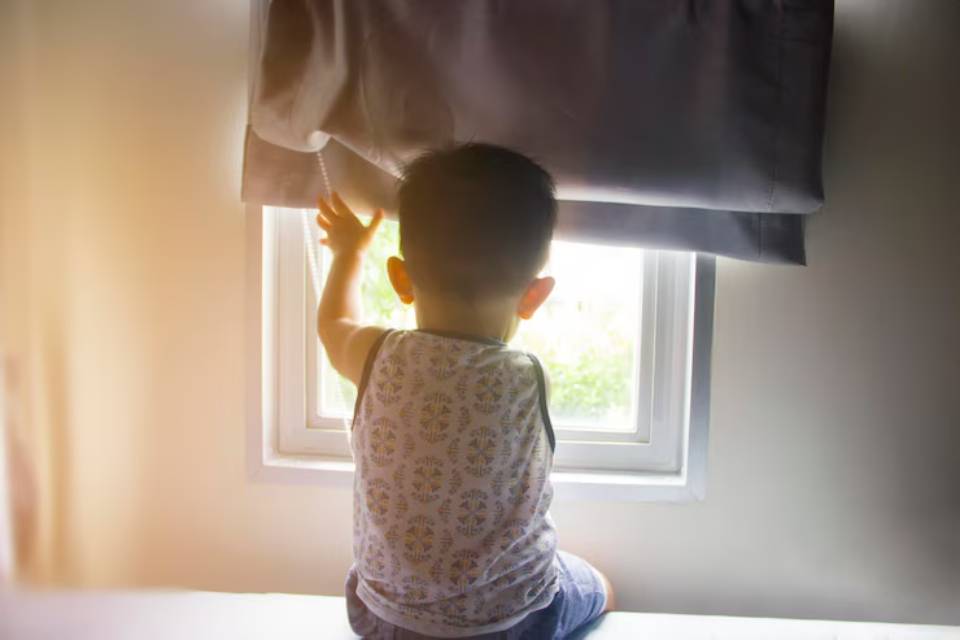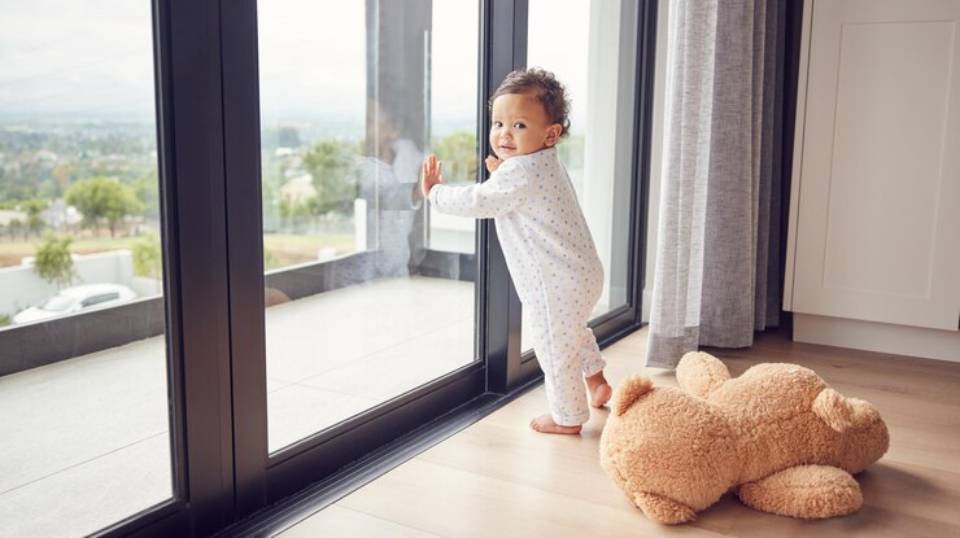
Wake Windows Explained: Baby Sleep Timing Made Easy
You’ve just finished feeding your baby, they’re calm and alert and before you know it, they’re crying inconsolably. You try to rock them, bounce them, soothe them — but nothing seems to work. Sound familiar?
Chances are, your baby may have missed their “wake window.”
One of the most effective — yet often overlooked — ways to help babies sleep better is by understanding the rhythm of their natural alertness and tiredness. These windows of wakefulness, known as baby wake windows, are the sweet spots between naps where babies are content, learning, and not yet overtired.
In this article, we’ll explore what wake windows are, why they matter, and how to use them to master your baby’s optimal nap timing — from the bleary-eyed newborn stage through the busy baby months. You’ll come away with clarity, confidence, and a rhythm that makes sleep feel simpler.
What Are Wake Windows?
Wake Windows Defined
A wake window is the amount of time your baby can comfortably stay awake between sleeps. It starts when they wake up and ends when they’re ready to sleep again — not when they’re already overtired.
These windows vary by age and even by day. Newborns often need sleep again after just 45 minutes, while older babies might stretch comfortably to 2–3 hours.
Why Wake Windows Matter
Understanding wake windows helps you:
- Prevent overtiredness, which can lead to fussiness and poor sleep
- Identify your baby’s ideal nap time
- Set up a more predictable daily rhythm
- Promote longer, deeper naps and smoother bedtimes
When babies are put down during their optimal wake window, they’re more likely to settle quickly and stay asleep — which is good news for everyone.
Baby Wake Windows by Age
While every baby is different, here’s a general guide to newborn wake schedules and how they evolve through the first year:
Baby’s AgeWake Window Range
0–6 weeks 35–60 minutes
6–12 weeks 60–90 minutes
3–4 months 75–120 minutes
5–6 months 2–2.5 hours
7–9 months 2.5–3 hours
10–12 months 3–4 hours
These ranges include feeding, changing, tummy time, and play. Always watch your baby’s cues in addition to the clock.
How to Spot Sleepy Cues Before It’s Too Late

Watching the clock is helpful, but your baby’s behaviour is your best guide. Sleep cues signal the end of a wake window.
Look for:
- Rubbing eyes or ears
- Yawning
- Glazed eyes or staring off
- Fussiness or clinginess
- Decreased interest in surroundings
- Red eyebrows or droopy eyelids
The key is to act on early cues. Waiting too long means your baby enters the overtired zone — and that’s when things spiral.
The Overtired Baby: Why Missed Wake Windows Matter
When a baby is awake too long, their body releases stress hormones like cortisol, which can make it harder to fall asleep or stay asleep.
Signs your baby is overtired include:
- Arching back or resisting comfort
- Short, broken naps
- Waking after 20–30 minutes
- Crying hard at nap or bedtime
- Frequent night wakings
Catching the right sleep window avoids this buildup, resulting in a more peaceful experience for both you and your baby.
Wake Windows and Nap Length: What’s the Link?
The timing of naps is just as important as their length. When you hit the sweet spot, naps are more likely to be:
- Longer (at least 45 minutes)
- Restorative
- Easier to settle into
Missing the mark often leads to “false starts” — where baby falls asleep, wakes after 10–20 minutes, and struggles to go back down.
To fine-tune your optimal nap timing, aim to:
- Monitor wake windows
- Start your nap wind-down routine 10–15 minutes before the end of the wake window
- Adjust based on how quickly your baby falls asleep
Wake Windows vs. Rigid Schedules
You might be wondering: Should I follow the clock or my baby? The answer is: a bit of both.
Wake windows offer a flexible rhythm, not a rigid routine. Unlike strict by-the-clock schedules, they:
- Adapt to your baby’s individual needs
- Allow for growth spurts, teething, and development
- Support responsive parenting over a one-size-fits-all approach
For example, a 3-month-old may nap every 90 minutes some days and every 75 minutes on others — and that’s normal. Wake windows give you a framework, not pressure.
Wake Windows and Bedtime

The final wake window of the day can make or break bedtime.
If bedtime battles or short stretches of night sleep are happening, ask:
- Was the last wake window too short? (Not tired enough)
- Was it too long? (Overtired and wired)
For most babies 3 months and older, the last wake window is the longest of the day, typically 2 to 3 hours. Use this window for calming activities, dim lights, and your wind-down routine.
For bedtime help tailored to newborns, creating a consistent bedtime routine for newborns offers step-by-step strategies.
How Wake Windows Support Better Nights
A well-balanced day sets the stage for better sleep at night. Babies who nap too frequently or stay awake too long during the day often:
- Wake more at night
- Struggle with early rising (before 6am)
- Have shorter night stretches
By managing your baby’s newborn wake schedule in daylight hours, you reduce the buildup of sleep debt, making night sleep smoother and more restorative.
What If Wake Windows Don’t Seem to “Work”?
You May Need to Tweak Timing
If your baby:
- Fights naps but crashes later – Try a shorter wake window
- Falls asleep but wakes quickly – Try extending the wake window
- Is always overtired by bedtime – Reassess nap timing and balance
Keep a sleep log for a few days to spot patterns — when they wake, when they nap, and how long each wake window lasts.
Don’t Expect Perfection
Babies are human. Some days they nap well, others they won’t. Teething, illness, and development can throw off even the most dialled-in sleep plan.
The goal is progress, not perfection. Wake windows are a tool, not a rule.
And remember: newborns, especially, are still adjusting. If your 6-week-old is struggling, our article on creating a consistent bedtime routine provides foundational strategies for gentle guidance.
Sample Wake Window Schedule by Age

Let’s look at a general example for a 4-month-old (wake window: 90–120 mins):
- 7:00 AM: Wake
- 8:30–10:00 AM: Nap 1
- 11:30AM–1:00PM: Nap 2
- 2:30–3:15 PM: Nap 3 (short nap)
- 5:00–6:30 PM: Wake window + wind-down
- 6:30 PM: Bedtime
Your baby’s day may look different — adjust for feeding needs, temperament, and developmental stages.
Wake Windows and Developmental Leaps
During growth spurts or brain leaps (hello, sleep regressions), your baby’s sleep needs shift.
You may notice:
- Shorter naps
- Increased fussiness
- More night waking
- Refusal to nap at the usual time
Rather than rigidly holding to old timings, treat wake windows as a flexible guidepost. Give your baby space to adjust — and trust that routines can be rebuilt once the leap passes.
Follow the Window, Not Just the Clock
Understanding your baby’s wake windows is one of the most empowering things you can do as a parent. It gives you a framework that feels intuitive, flexible, and responsive — the opposite of rigid schedules or guesswork.
By observing cues, honouring rhythms, and adapting with your baby’s growth, you’ll help them fall asleep more easily, stay asleep longer, and feel more content overall.
So the next time you’re wondering if it’s time for a nap, trust the window.
Because when you get the timing right, sleep becomes a whole lot easier.


